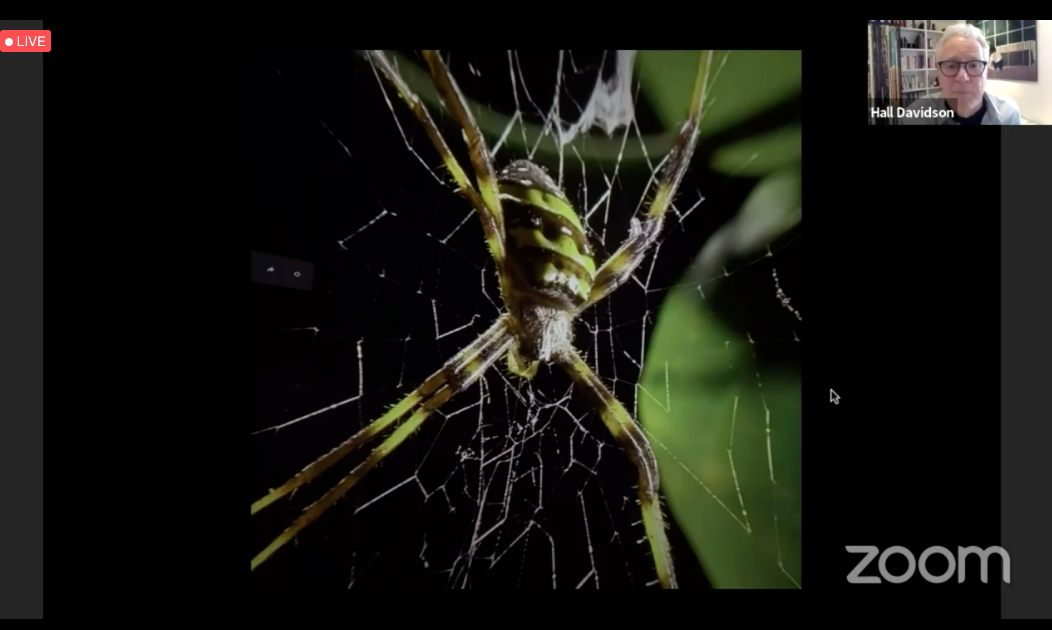The usual gang of ed-tech experts showed off the latest learning tools—with a focus on social emotional learning and virtual reality—at Friday’s FETC® highlight, TechShare Live.
However, there was one very low-tech approach recommended by Hall Davidson, Discovery Education’s senior director of global learning initiatives.
“Think about using laughter as part of your class,” Davidson said.
Teachers looking to put laugh tracks into their remote learning sessions can grab sound effects from a website called ZapSplat.
Essential acronyms: SEL & VR
Supporting students’ and teachers’ social-emotional wellbeing will be essential as they return to school post-COVID, Davidson said.
For example, a site called AmazingMeSelfEsteem.com helps students with body affirmation concepts.
More from DA’s FETC: What is your school district’s ‘Cybersecurity Story?’
On the cutting edge of ed-tech, virtual reality tools have made big leaps over the last year, Davidson said.
 Teachers can take classes—even when they’re remote—on field trips with VR headsets. Teachers can screencast from their headsets to share the experience with their classes.
Teachers can take classes—even when they’re remote—on field trips with VR headsets. Teachers can screencast from their headsets to share the experience with their classes.
VR can also be used as a tool for SEL, said ed-tech expert Leslie Fisher, director of lesliefisher.com.
Platforms such as AltspaceVR allow users to create avatars they can embody virtually to interact with each other—a necessary tool during the isolation of COVID, Fisher said.
Fisher used a VR headset to celebrate New Year’s Eve four times in four different time zones. “If it wasn’t for the the pandemic I would feel like I was living in thie weird Ready Player One world,” she said, referring to the novel about immersive video games.
Users can work out in virtual spaces on FitXR and go on adventures on Alcove, she added.
Finally, Virbela, which is now building out if platform for the education space, allows users to create avatars to interact in virtual schools and campuses.
Having difficult discussions
COVID, the country’s political divisiveness and police shootings of Black Americans have required educators and parents to have difficult conversations with kids.
 Sites that can help include Speaking Truth to Power in School, Teaching Tolerance and Teaching With Testimony, said Adam Bellow Co-Founder, Breakout EDU.
Sites that can help include Speaking Truth to Power in School, Teaching Tolerance and Teaching With Testimony, said Adam Bellow Co-Founder, Breakout EDU.
Teaching Tolerance, for example, guides teachers in having age appropriate conversations and suggests activities for creating and consuming political art.
More from DA’S FETC: Districts of Distinction winners show off projects at FETC
Teaching With Testimony invites students to participate in a “Stronger Than Hate” challenge in which they can enter videos, poems and songs about combating racism and intolerance.
As for wellness, sites such as Aloyoga provide videos on yoga, meditation and creativity geared toward younger leaners. Bellow recommended that teachers and other educators use the site.
“It’s difficult to parse being there for yourself and being there for students at the same time,” he said.
Power of podcasts
Podcasts can help students learn to listen at a time when these skills are being eroded by the barrage of information, said Kathy Schrock, kackl! tech consulting.
 Teachers, from elementary to high school, can give students a short summary and have them predict what the podcast will cover. After listening, students can write—or record audio files—discussing the podcast.
Teachers, from elementary to high school, can give students a short summary and have them predict what the podcast will cover. After listening, students can write—or record audio files—discussing the podcast.
Top podcasts for elementary students include Tumble, Brains On, Classics for Kids and Smash Boom Best. Older students may like Undiscovered, Science Diction and the Six Minutes mystery series.
There are also podcasts for educators. Teachers can listen to Classroom Commute on their way to work or while working out, Shrock said.
The MagicPotionEdu podcast feature weekly interviews with educators and thought leaders.







